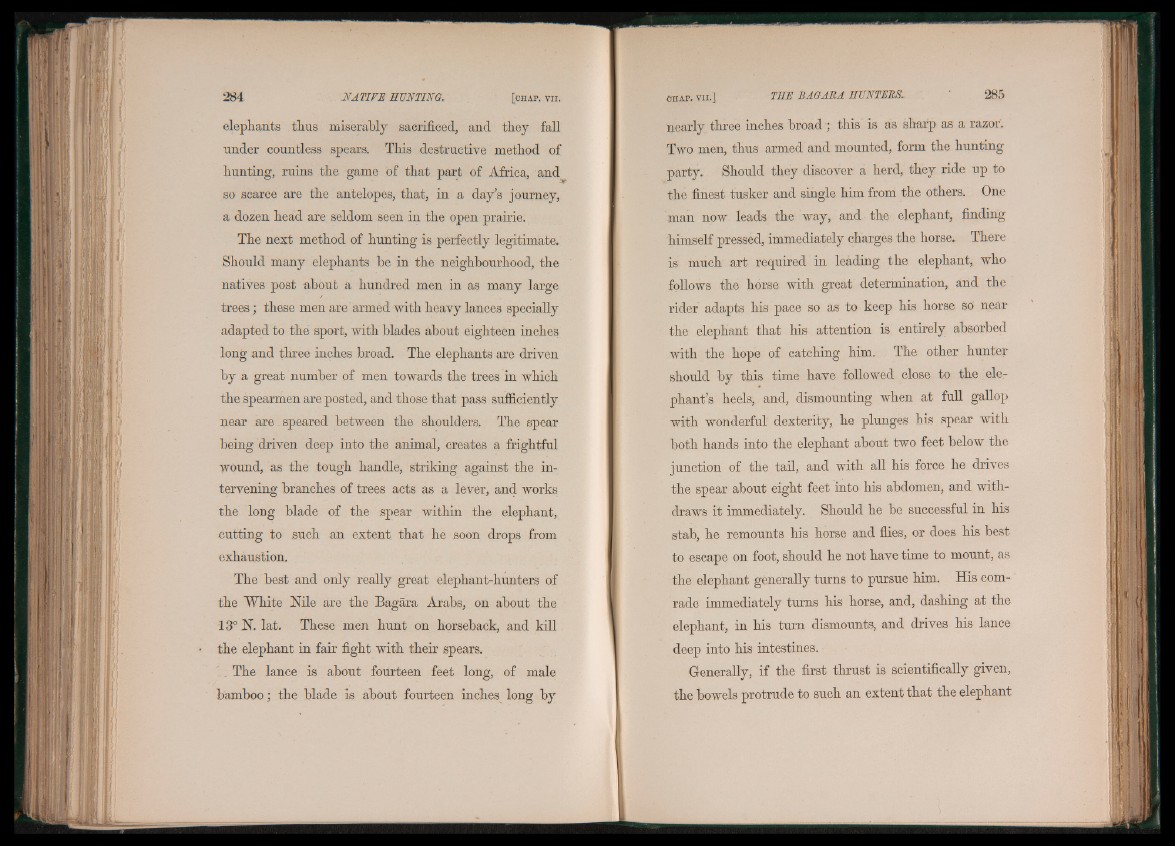
elephants thus miserably sacrificed, and they fall
under countless spears. This destructive method of
hunting, ruins the game of that part of Africa, and^
so scarce are the antelopes, that, in a day’s journey,
a dozen head are seldom seen in the open prairie.
The next method of hunting is perfectly legitimate.
Should many elephants be in the neighbourhood, the
natives post about a hundred men in as many large
trees; these men are armed with heavy lances specially
adapted to the sport, with blades about eighteen inches
long and three inches broad. The elephants are driven
by a great number of men towards the trees in which
the spearmen are posted, and those that pass sufficiently
near are speared between the shoulders. The spear
being driven deep into the animal, creates a frightful
wound, as the tough handle, striking against the intervening
branches of trees acts as a lever, and works
the long blade of the spear within the elephant,
cutting to such an extent that he soon drops from
exhaustion.
The best and only really great elephant-hunters of
the White Nile are the Bagara Arabs, on about the
13° N. lat. These men hunt on horseback, and kill
the elephant in fair fight with their spears.
. The lance is about fourteen feet long, of male
bamboo; the blade is about fourteen inches long by
nearly three inches broad ; this is as sharp as a razor.
Two men, thus armed and mounted, form the hunting
party. Should they discover a herd, they ride up to
the finest tusker and single him from the others. One
man now leads the way, and the elephant, finding
himself pressed, immediately charges the horse. There
is much art required in leading the elephant, who
follows the horse with great determination, and the
rider adapts his pace so as to keep his horse so near
the elephant that his attention is entirely absorbed
with the hope of catching him. The other hunter
should by this time have followed close to the elephant’s
heels, and, dismounting when at full gallop
with wonderful dexterity, he plunges his spear with
both hands into the elephant about two feet below the
junction of the tail, and with all his force he drives
the spear about eight feet into his abdomen, and withdraws
it immediately. Should he be successful in his
stab, he remounts his horse and flies, or does his best
to escape on foot, should he not have time to mount, as
the elephant generally turns to pursue him. His comrade
immediately turns his horse, and, dashing at the
elephant, in his turn dismounts, and drives his lance
deep into his intestines.
Generally, if the first thrust is scientifically given,
the bowels protrude to such an extent that the elephant